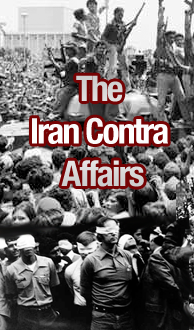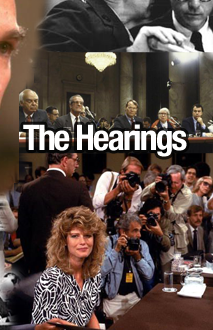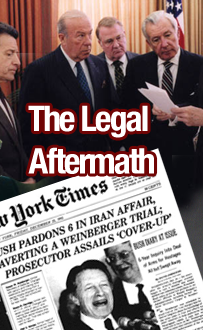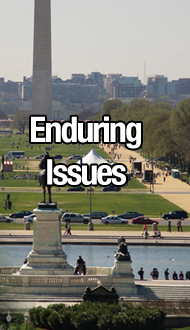| Date | Nicaragua | Iran |
| 1926 | Augusto Sandino was a member of a revolution fighting against the Conservative ruler of Nicaragua, Adolfo Díaz (who was backed by the U.S.) and continued fighting after a cease-fire. | |
| 1932 | The outgoing liberal president appointed Anastasio "Tacho" Somoza García to head the National Guard; Sandino maintained some land and a small army that the new President gave him upon the departure of U.S. Marines. | |
| 1936 | "Tacho" Somoza takes power after the murder of Sandino and his dynasty rules for the next 43 years. | |
| 1953-1979 | | Mohammad Reza Shah Pahlavi is the secular and authoritarian ruler (known as the Shah) of Iran. Iran is one of the U.S.’ strongest allies in the Middle East. |
| 1961 | The Sandinista National Liberation Front (FSLN; named after Sandino) is founded in opposition to the regime. Ideologically, it sees itself as a Marxist-Leninist vanguard organization whose goal is to create a socialist state. They were inspired by the Cuban revolution and were against U.S. intervention. | |
| 1967 | Anastasio Somoza Debayle comes to power. | |
| 1972 | An earthquake rocks Nicaragua, and President Somoza Debayle takes some relief aid for himself. | |
| 1974 | The FSLN launches an attack and a kidnapping, which results in Somoza Debayle declaring a state of siege and a brutal counterinsurgency campaign.
Opposition journalist Pedro Joaquín Chamorro founds the UDEL (Union for Democratic Liberation). | |
| 1977 | Jimmy Carter takes office at a time when Americans were wary of foreign intervention due to the Vietnam War. He subsequently cuts off all aid to the Nicaraguan government until it improves its human rights status; Somoza lifts the state of siege in order to receive aid. The Sandinistas renew and expand their attacks against the regime with the support of some academics, businessmen, and priests, including Calero.
Business elites, including Alfonso Robelo, are angry at Somoza Debyale’s failure to promote business interests and the fact that his dynasty prevents others from participating in politics. Major political parties are not powerful and, therefore, these people have nobody to represent their interests. However, the UDEL grows, attracting Robelo and Calero. | |
| 1978 | | Riots and demonstrations break out across Iran, largely in response to the Shah’s secularism and close relationship with the U.S. |
| Jan. 10, 1978 | Chamorro is assassinated, setting off protests throughout the country. | |
| Summer 1978 | The Frente Amplio de Oposición or the Broad Opposition Front (FAO), an umbrella group of opposition movements, is formed. It includes moderates and the more radical FSLN. | |
| Aug. 22, 1978 | Sandinista forces, led by Pastora, captured the National Palace where the Nicaraguan legislature is in session. Pastora gets the regime to give money, release prisoners, and provide means of publicizing the Sandinista cause. However, the FSLN reads a communiqué by brothers Humberto and Daniel Ortega, two powerful Sandinista leaders, which suggests their Socialist aims. This frightens some moderates in the FAO.
Uprisings against the state continue. The Sandinistas, with materiel support from Venezuela and Panama, continue fighting. Carter tried to get all sides together to find a solution to the conflict to no avail. However, the U.S. forces the FAO to moderate its positions, leading to the departure of the FSLN from the group.
As the fighting continued, FSLN is bolstered by international opposition to the regime, as well as by Cuban support in the form of arms and military advising. | |
| 1979 | | Riots and demonstrations grow increasingly numerous, frequent, and violent, culminating in the Iranian Revolution. |
| Jan. 1979 | | The Shah leaves Iran, and the country is declared an Islamic Republic by Ayatollah Ruhollah Khomeini. The Ayatollah severs all ties with the U.S. and declares the Israeli state illegitimate. |
| Jul. 19, 1979 | The Sandinistas take power. They soon declare a state of emergency and expropriate land and businesses owned by the old dynastic family and their associates; nationalize banks, mines, transit systems; abolish the old courts, the old constitution, and the legislature; and organize peasants and workers into Civil Defense Committees. This prompted criticism from the Catholic Church and business interests, and the Sandinistas arrest dissidents.
Carter sends $99 million in aid to the FSLN, in aims that it would become pro-U.S. Meanwhile, Cuban officials fly to Nicaragua to advise the FSLN on foreign and domestic policy and the FSLN sought an alliance with the Soviet Bloc. | |
| Nov. 4, 1979 | | Muslim Student Followers of the Imam's Line, a fundamentalist, anti-imperialist group made up predominately of young radical revolutionaries, seized the U.S. embassy in Tehran. This was the end of cordial diplomacy between the two nations. |
| Aug. 28, 1979 | The FSLN passes three decrees limiting the freedom of the press and political organizing against the new government. | |
| Sept. 12, 1979 | Carter releases remaining aid that is due to Nicaragua. | |
| Sept. 1980-Aug. 1988 | | The Iran-Iraq War begins and spans most of the decade. |
| Early 1980 | Once it becomes clear to policymakers in Washington that the FSLN would not moderate its position, Carter authorizes a finding that allows the CIA to support resistance forces in Nicaragua with organizing and propaganda, but not armed action. | |
| Feb. 1980 | Alfonso Robelo and his Movimiento Democrático Nicaragüense or Nicaraguan Democratic Movement (MDN) party begin vocal opposition to the Sandinista government and call for democracy, elections, and political pluralism. | |
| Mar. 1980 | The FSLN signs economic, cultural, technological, and scientific agreements with the USSR.
Violent opposition to the new regime begins, and attacks are carried out by peasants and farmers wary of the new government’s agrarian policies. | |
| Mid-1980 | José Cardenal and Enrique Bermúdez form what would become the Nicaraguan Democratic Force, or FDN (the main Contras group). | |
| Late 1980 | It becomes clear that the FSLN is supporting revolutionaries in neighboring El Salvador. Carter initially ignores this and continues to give the Sandinistas aid in order to curry favor. | |
| Jan. 20, 1981 | Ronald Reagan is inaugurated in the context of a rightward shift in U.S. politics and concern about the Soviet Union. Due to the continued unwillingness of the Sandinistas to stop their support of Salvadoran rebels, Reagan soon cuts off all aid to the FSLN indefinitely. This prompts the FSLN to suggest that the U.S. would invade, thereby justifying further consolidation of power and crackdowns on perceived enemies. | |
| Early 1981 | FSLN becomes more radical as moderates are kicked off of the governing junta. Eventually, Arturo Cruz and Éden Pastora became disaffected with the revolution and defected. | |
| Mar. 9, 1981 | Reagan authorizes the CIA to help interdict arms trafficking to El Salvador, but does not give them the power to arm rebel groups. Concurrently, the administration tries to convince the FSLN to stop their activities. | |
| Dec. 1, 1981 | Reagan signs the order allowing the CIA to support the Contras with arms, equipment, and money in order to put pressure on the regime. This is concurrent with U.S. efforts at diplomatic initiatives and the strengthening of pro-U.S. regimes in Central America. Covert activities are viewed as the best way to pressure the regime. The Contras are trained by Argentineans and operated out of Honduras. | |
| Mar. 14, 1982 | Opposition forces blow up two bridges, including one used to ship supplies to Salvadoran rebels. The Sandinistas impose a state of emergency and crack down on the opposition while tightening press restrictions. | |
| Apr. 1982 | Pastora declares that he is going to take up arms against the Sandinistas. In May, Robelo declares his support and soldiers leave the Sandinista army to join Pastora. | |
| Jun. 1982 | The birth of the Reagan Doctrine is publicly announced. This is Reagan’s foreign policy that established support for democratization in countries engaged in socialist revolutions. Thus, the goal of covert operations in Nicaragua shifts from one of ostensibly interdicting arms, to one of supporting a change in government. | |
| Dec. 7, 1982 | The CIA introduces the “political directorate of the FDN;” this included Edgar Chamorro, businessman Adolfo Calero, and Enrique Bermúdez, a former guardsman. Chamorro later resigned due to the fact that, in his view, Contras purposely targeted civilians. | |
| Dec. 21, 1982 | The first Boland Amendment is passed into law, which bars the use of funds "for the purpose of" overthrowing the government of Nicaragua or provoking a war between Nicaragua and Honduras. | |
| Late 1982-1983 | | U.S. is actively engaged in preventing arms sales to Iran, known as Operation Staunch. |
| Late 1982-1983 | Some in Congress, especially liberal Democrats, are angry at the continued support of the Contras and the growing war in Nicaragua. They think that it might violate the Boland Amendment. | |
| 1983 | | Saudi Arabian businessman Adnan Khashoggi first meets with National Security Advisor Robert McFarlane and CIA Officer Theodore Shackley meets with Iranians Manucher Hashemi, Manucher Ghorbanifar, and Hassan Karoubi. |
| Spring 1983 | McFarlane thinks that Israel could give some of its U.S. appropriations to the Contras. | |
| Late 1983 | The CIA assists the Contras in attacking transportation and economic targets in Nicaragua. | |
| Jan. 1984 | | McFarlane formally requests the National Security Council (NSC) to examine ways to influence Iran. The report conveys an impasse. |
| Jan. 1984 | A retired Army general, John Singlaub, offers to help the Contras get money, supplies, and recruit military advisers; he continuously meets with Col. Oliver North and gets his approval for his actions. Singlaub tries to get money from Taiwan and South Korea for the Contras. Eventually, North and Gen. Richard Secord stop him from doing further business for the Contras. | |
| Jan. 7, 1984 & Feb. 29, 2984 | The CIA mines harbors in Nicaragua. North knew of the plan and recommended that the President sign off on it. | |
| Feb./Mar. 1984 | McFarlane meets with his Israeli counterpart David Kimche and asked him if Israel would help train the Contras. | |
| Mar. 1984 | | The religious fundamentalist group Islamic Holy War kidnaps William F. Buckley, the CIA chief in Beirut, Lebanon. More American hostages are taken in the following years. |
| Mar. 27, 1984 | CIA Director William Casey says that McFarlane should look for funding from Israel and others; Israel declined, and Sec. of State George Shultz at first questioned the legality of getting money from other countries. | |
| Spring 1984 | Congress finds out about the CIA’s mining of the harbors, which Casey had barely informed the intelligence committees about. There was great uproar and backlash against aid to the Contras. | |
| Jun. 1984 | McFarlane gets money from Saudi Arabia for the Contras; he later stated that he had not solicited it, but had merely mentioned the problem of losing aid for the Contras, and the Saudis gave money. | |
| Summer 1984 | North asks Secord to get involved with the Contras by getting supplies to them. He and Iranian-American businessman Albert Hakim join the cause. They strike a deal with Calero to supply arms. Israeli representatives are brought into the discussion. | |
| 1984 | Some in the Administration have the idea of setting up a private tax-exempt organization to raise money for the Contras. Fundraiser Carl Channell spearheads this effort to solicit private funds for the Contras. He would seek out potential donors, many of whom would meet with North or Reagan. | |
| Aug. 1, 1984 | House passes the second Boland Amendment, which reads: “During Fiscal Year 1985, no funds available to the Central Intelligence Agency, the Department of Defense, or any other agency or entity of the United States involved in intelligence activities may be obligated or expended for the purpose or which would have the effect of supporting directly or indirectly, military or paramilitary operations in Nicaragua by any nation, group, organization, movement or individual.” Boland states that U.S. support for the Contras gave the FSLN an excuse to be repressive and undemocratic. | |
| Oct. 12, 1984 | Boland II becomes law. Two ways for the administration to potentially bypass the act are to solicit third-party funds (private donors/third countries) or use the NSC on the logic that it was not covered under Boland. North, on loan to the NSC from the Marine Corps, spearheads this activity. | |
| Nov. 4, 1984 | Nicaraguan elections are held; Daniel Ortega, a member of the FSLN during the revolution, wins. | |
| Nov./Dec. 1984 | North gives intelligence to the Contras regarding Soviet helicopters sold to the Sandinistas. | |
| 1985 | Channell’s organizations take in over $12 million, of which $2.7 million went to the Contras. | |
| Early 1985 | | Ghorbanifar and Khashoggi meet in Hamburg and devise a skeleton plan that will become the Iran arms deal. |
| Feb. 1985 | When the initial Saudi contribution ran out, they donated more. In total, they gave $32 million. | |
| 1985 | North helps to get a $1 million contribution for the Contras from Taiwan. | |
| May 1, 1985 | Reagan announces an economic and trade embargo against Nicaragua due to a trip President Ortega took to Moscow. | |
| Summer 1985 | Secord and Hakim become Calero’s sole arms suppliers. In all, they sell about $11 million in arms and other equipment to the Contras. | |
| Jun. 1985 | Cruz, Robelo, and Calero unite as the United Nicaraguan Opposition (UNO). | |
| Jul. 1985 | North approaches Secord about conducting air supply operations for the Contras. | |
| Jul. 1, 1985 | | Reagan publicly denounces bartering with terrorists. |
| Jul. 3, 1985 | | McFarlane meets with Kimche, who is in the U.S. on behalf of the Israelis and who had met with Khashoggi and Ghorbanifar. The arms-for-hostages deal is first outlined, as is the prospect of improving the U.S.-Iran relationship. |
| Jul. 16, 1985: | | McFarlane meets with Reagan and his Chief of Staff Don Regan while Reagan is in the hospital recovering from surgery. They discuss the possibility of selling arms to Iran via Israel in order to get the hostages released and to open communications with Iran. The details of this visit are hazy, but McFarlane came away from it with the idea that the President had encouraged him to go forward with discussions with the Iranians and Israelis. |
| Aug. 1985 | Reagan signs into law legislation giving $14 million in humanitarian assistance directly to the Contras. | Reagan approves the plan to allow Israelis to sell U.S.-made weapons to Iran. |
| Aug. 20, 1985 | | The first load of missiles is sent from Israel to Iran. |
| Sept. 15, 1985 | | American hostage Benjamin Weir is released. North is brought in to deal with the logistics. |
| Nov. 1985 | First funds from arms sales are diverted to Nicaraguan Contras through Secord’s Enterprise. | The second load of missiles is sold. Secord is brought in to help replenish Israel’s supply of weapons. |
| Late 1985-Early 1986 | Boland language is loosened in the 1986 intelligence authorization bill to say that the CIA can provide training and intelligence to the Contras, as long as it does not “amount to participation in the planning for execution of military or paramilitary operations” or participation in “logistics activities integral to such operations.” New legislation also allows the Administration to get funds from third countries and private parties provided there is no quid pro quo. | |
| Jan. 17, 1986 | | Reagan signs a finding authorizing the transfer of arms to Iran through the Enterprise order to release the U.S. from liability. |
| Feb. 1986 | | Taiwan gives another $1 million. North, Ghorbanifar, and Iranian representatives meet in Germany and work out a plan to send further arms in exchange for the release of U.S. hostages. |
| Feb. 27, 1986 | | The U.S. sent 1,000 TOWs (anti-tank missiles) to Iran, yet no hostages were released. |
| Mar. 7, 1986 | Ghorbanifar allegedly suggests the diversion to Cave. | |
| Apr. 4, 1986 | | North writes the “Diversion Memorandum,” which clearly lays out what is going on with the transfer of funds to Contras. |
| May/Jun. 1986 | Only $1.2 million+ of as much as $11 million in the Enterprise’s accounts was actually spent on the Contras. | |
| Aug. 1986 | | Secord and his business partner Hakim meet with a new Iranian contact, Ali Hashemi Bahramani, and open up a second channel in Iran. |
| Summer 1986 | Congress passes $100 million in aid to the Contras. At this point, most in Congress were tired of the Sandinistas. | |
| Oct. 1986 | | North meets with this new group of Iranians, and Hakim, serving as a U.S. representative, works out a nine-point plan with the group. |
| Oct. 5, 1986 | A plane flying supplies to the Contras was shot down in Nicaragua and American Eugene Hasenfus was captured; it seemed the U.S. was involved, but Reagan denied it and Congress did not look into it too thoroughly. This eventually led to the full exposure of the operation and the Iran-Contra Affair. | |
| Oct. 28, 1986 | | The first shipment through the second channel is sent to Iran. Iran paid $3.6 million to the Enterprise, of which $2 million was turned over to the CIA, who had officially supplied the weapons. The remainder was diverted to the Contras. |
| Nov. 1986 | | Two Lebanese newspapers break story of the arms deals and the operations comes to an end. |









